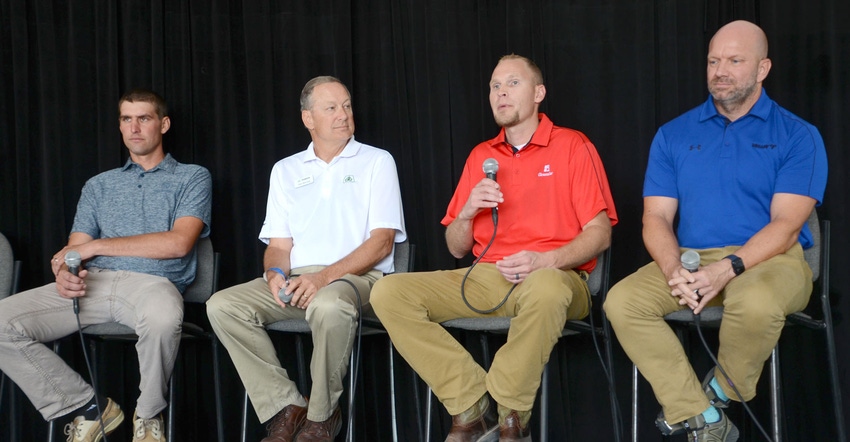September 29, 2021

Editor’s note: This is the first of three reports on the Nebraska Ag Technology Summit held during Husker Harvest Days. Here, speakers looked at the current state of agronomy technology. The second installment will review next-generation machinery. And the third will look at the advancing bio-economy.
Ag technology has come a long way, and during the inaugural Nebraska Ag Technology Summit held during Husker Harvest Days in mid-September, visitors got an in-depth look at topics impacting the industry. The event opened with a look at agronomic technology.
Perhaps the best way to look forward is to look back. Craig Langemeier, Nebraska product agronomist for Hoegemeyer Seeds, did that as he opened the agronomic technology portion of the event.
“Does anybody know what the average soybean yield was in 1996?” he asked attendees. “It was 37 and a half bushels per acre.” Today, that number has grown to 50.6 bushels per acre nationally and more than 57 bushels in Nebraska.
“So just think about that,” he said. “In 25 years, we raised the production level for the crop.”
Langemeier then turned his attention to corn, noting the national average in 1996 was 127 bushels per acre. And for 2020, the national average was 174 bushels per acre.
For corn, taking on insect pests with Bt technology helped build yield by protecting the genetic potential of the crop and bringing precision to insect pest management.
Fine-tuning breeding
While biotech traits have helped preserve crop yields, the potential must be there first. During the summit, Dan Berning, agronomy manager for Pioneer Seeds, shared that the company has more than 5,000 plant breeders at work around the world. Analyzing those global hybrids provides Pioneer the opportunity to bring more choices to market to target local areas.
Beyond the analytics that help with targeted breeding, Berning said the company is using drones to enhance breeding efforts. By using that precision aerial imagery, it’s possible to cover more ground precisely.
Related: Pioneer turns to robot for crop development
“We would have thousands of plots to develop crops,” Berning said. “And it can take six hours to walk those thousands of plots in a single location. With the drone technology, we can apply the same approach and cover the area in 30 minutes. And that’s a task you complete with one person, not six or seven.”
Pioneer also is looking at robotic technology to do plot development work, Berning said. And for advanced tech in seed development, he shared how expanding traits offer more options at planting time. Add in a growing choice in seed treatments to protect the crop, and he said farmers have more ways to boost yields.
Going digital
Building on the technology that goes into agronomy, Dan Ilten, digital business manager for Corteva Digital Solutions, shared how digital farming is growing. The focus is on bringing a higher level of precision to agriculture.
“One area within our business of Granular is to provide insights. What insights can I gain from my data?” he said. “When we think about planning, we talk about planning with our seed reps, putting the right hybrids on the right acre at the right rate. And from an agronomic standpoint, we can build out a variable-rate fertility plan.”
Ilten looks at input costs, which are high for 2022, maximizing that investment. “So a proper soil sample costs you about $10, right? If you spend $10 and you get good information for that money,” it gives “$250 to $300 per acre of decision-making power,” he said.
Likewise, precision satellite data delivered two to three times a week help maximize decisions on the farm. Ilten noted those images can help manage water use, catch broken nozzles on a pivot and make better decisions for the farm.
Tech and field decisions
While focused on irrigation, Trevor Mecham, vice president of global technology strategy at Valmont, turned the conversation back on the panel, noting that farmers want better ways to bring information together. “Farmers want to be able to work with Granular or Pioneer or Valley to allow them to be able to actually see that information in real time,” he said. “Farming doesn’t stop at the plant; that’s where the yield starts.”
Mecham said with the variability of the weather, farmers want to have more capability for predictive management, and many players are striving for agronomic innovation. “I need the ability for us to be able to apply sensors on pivots that allow me to say where I should water, and how much I should water,” he said.
Agronomic technology is advancing fast as farmers embrace biotech tools, enhancements in crop protection and more tools for in-season crop management.
About the Author(s)
You May Also Like






